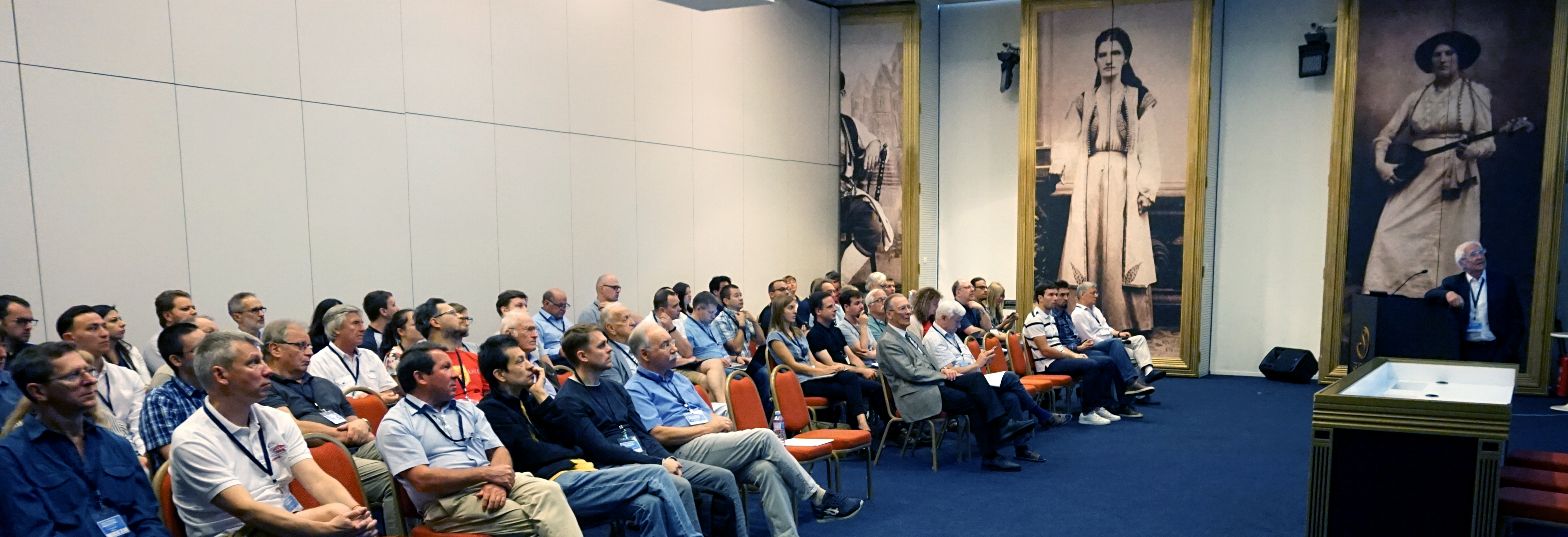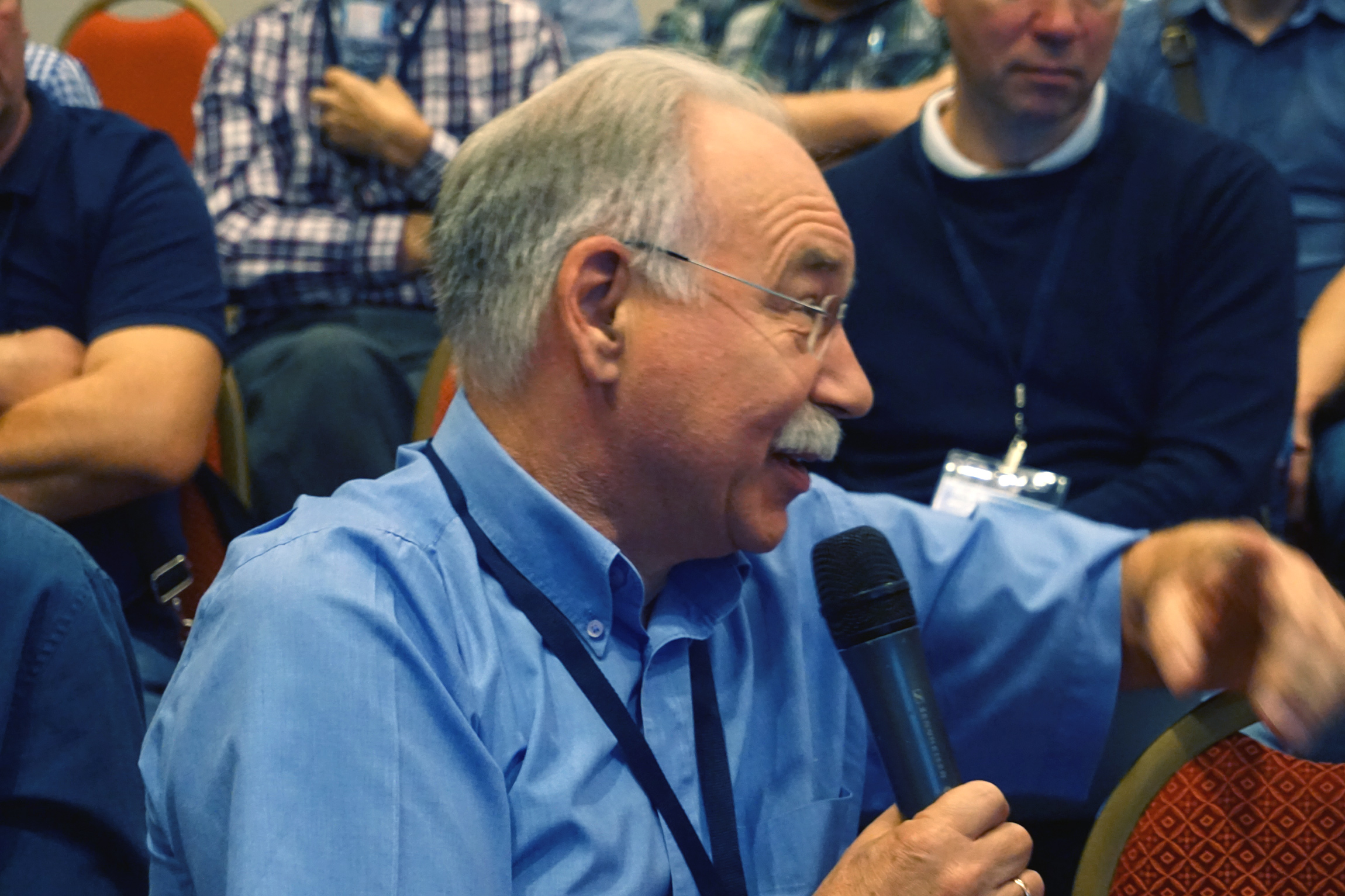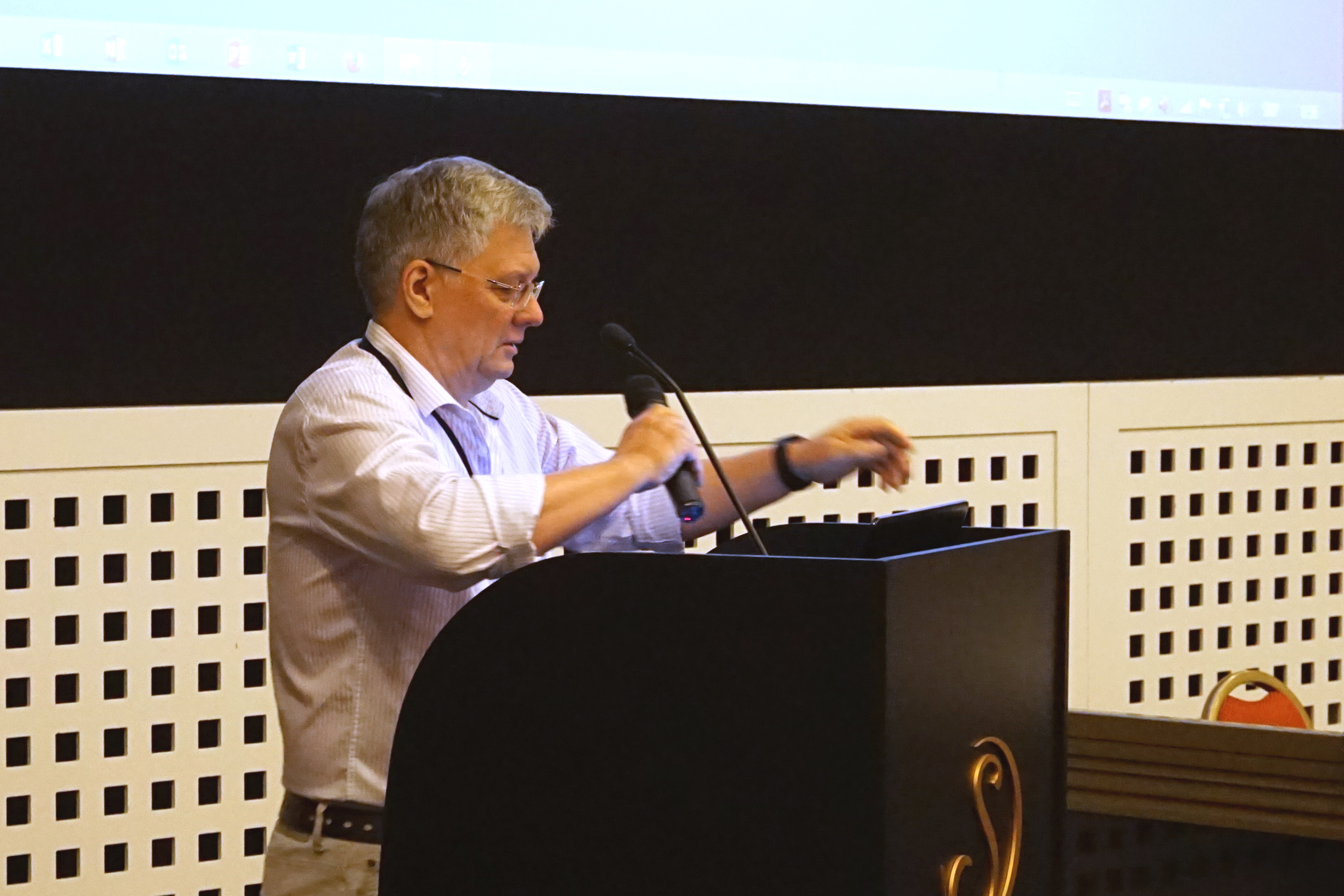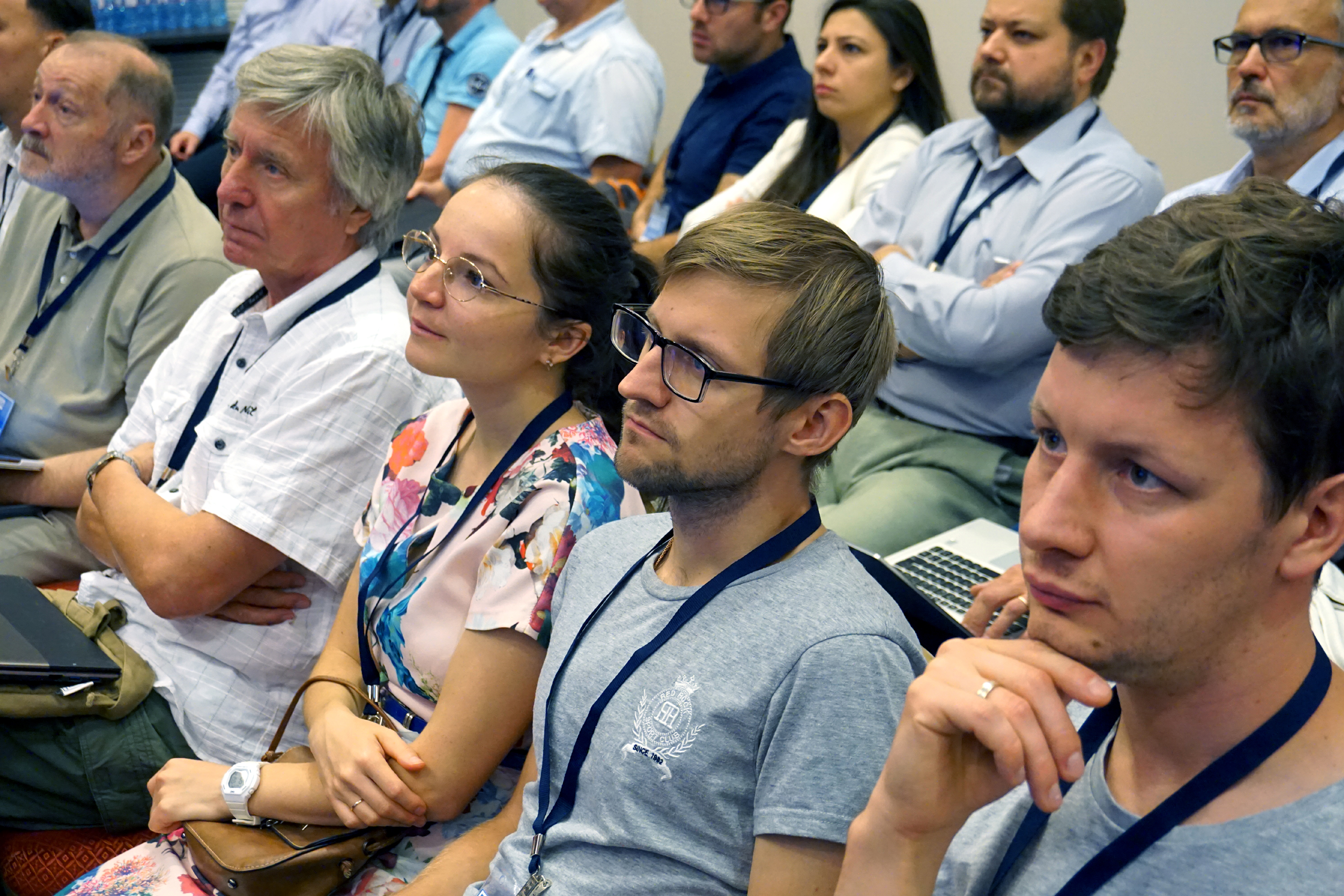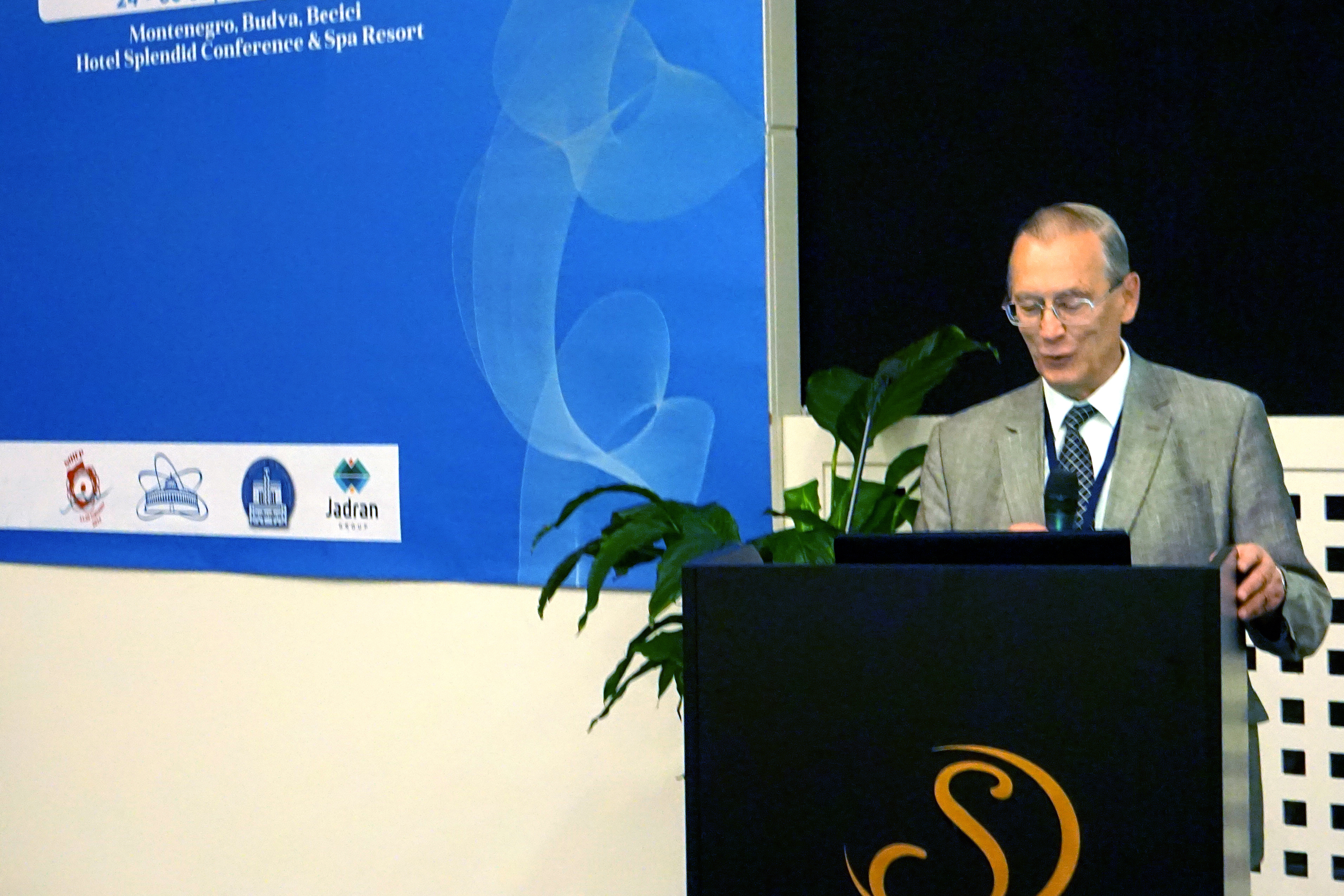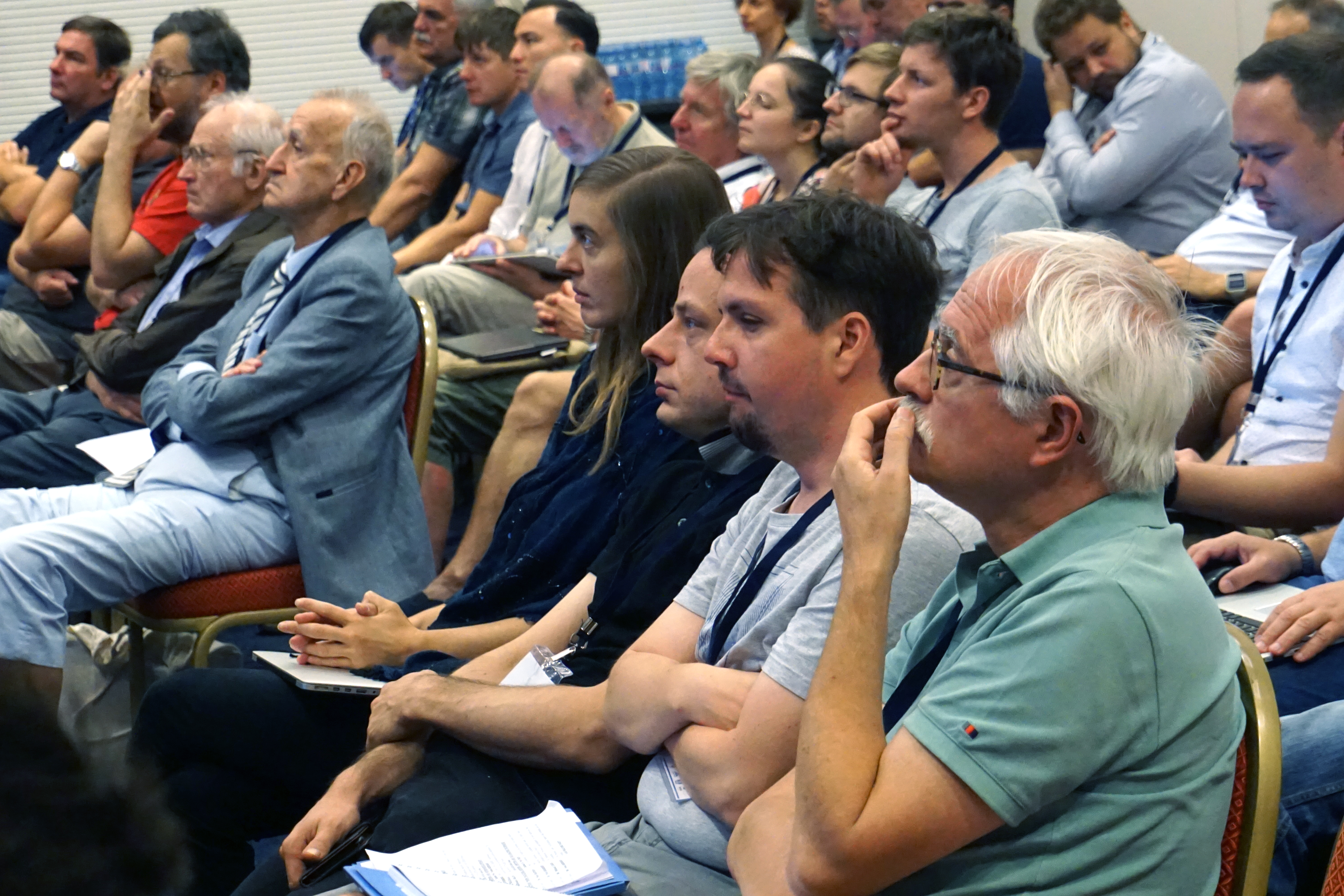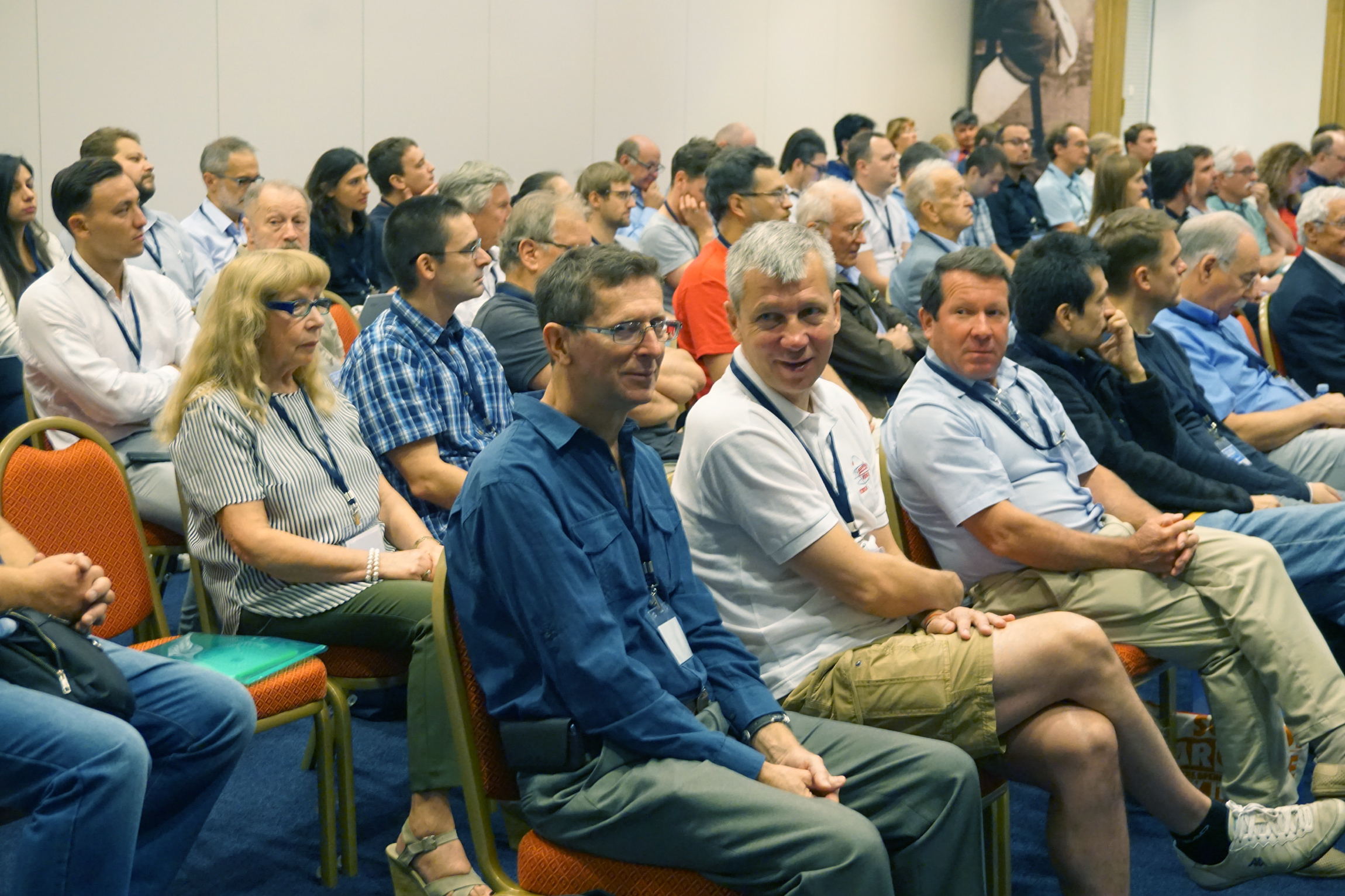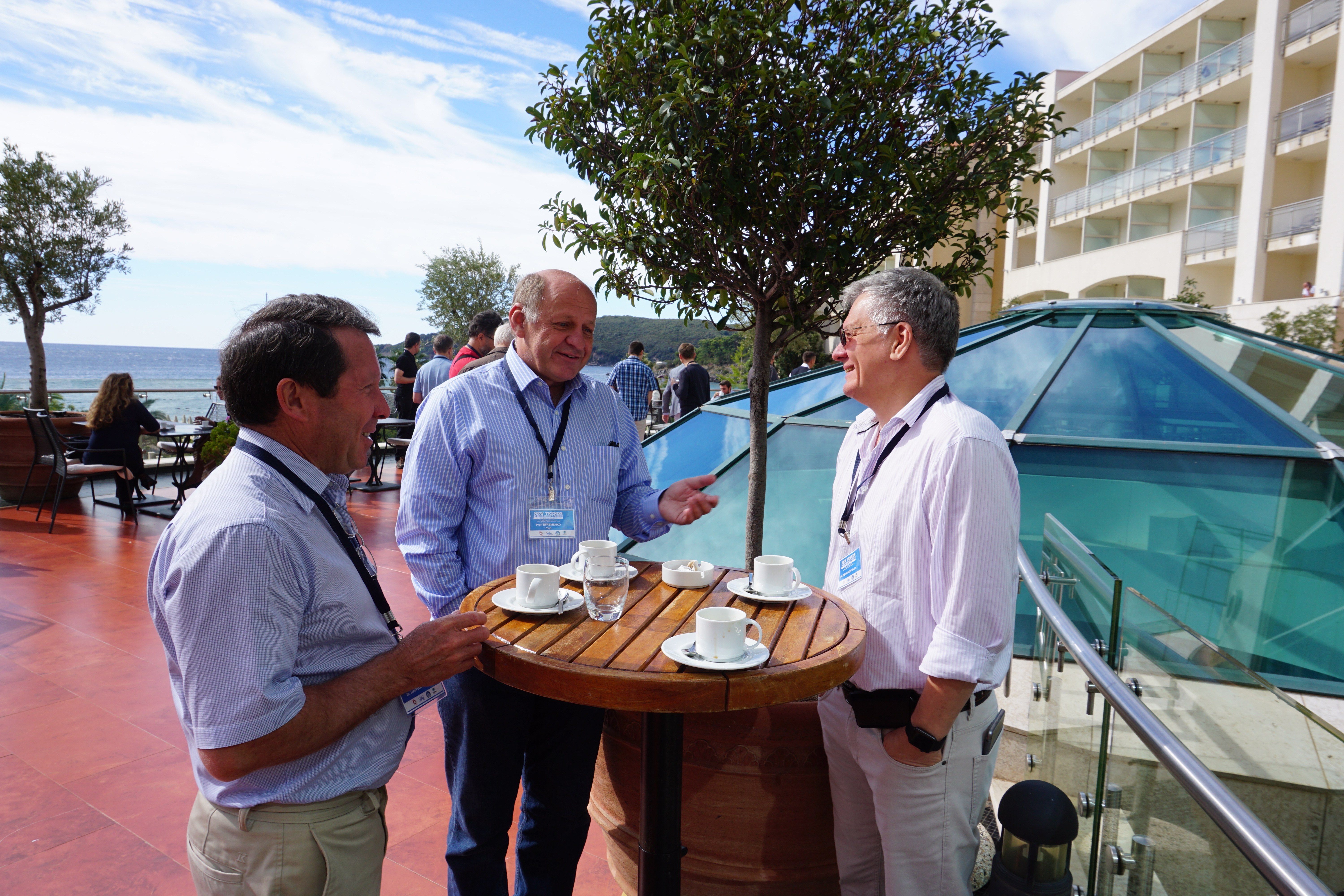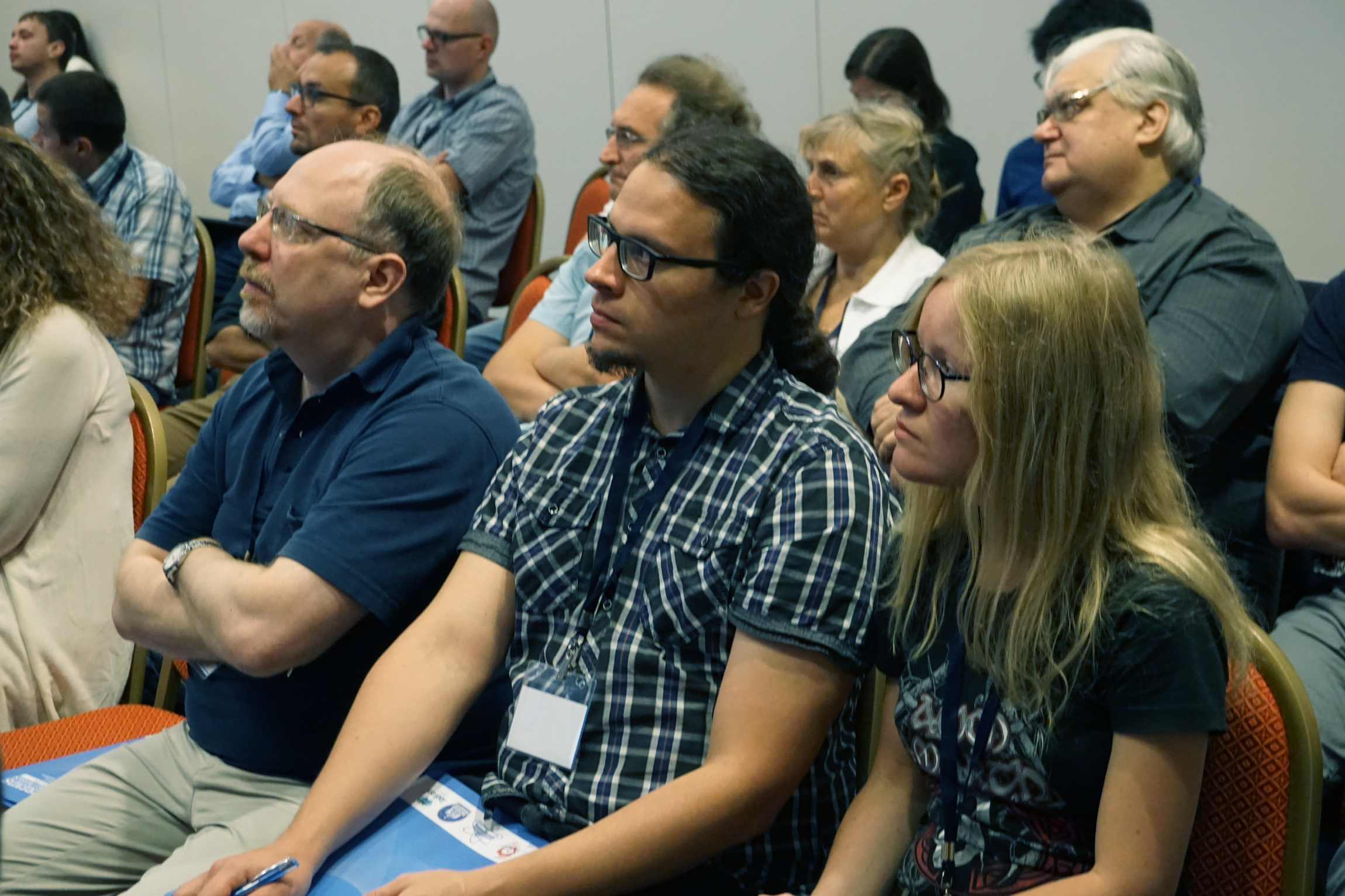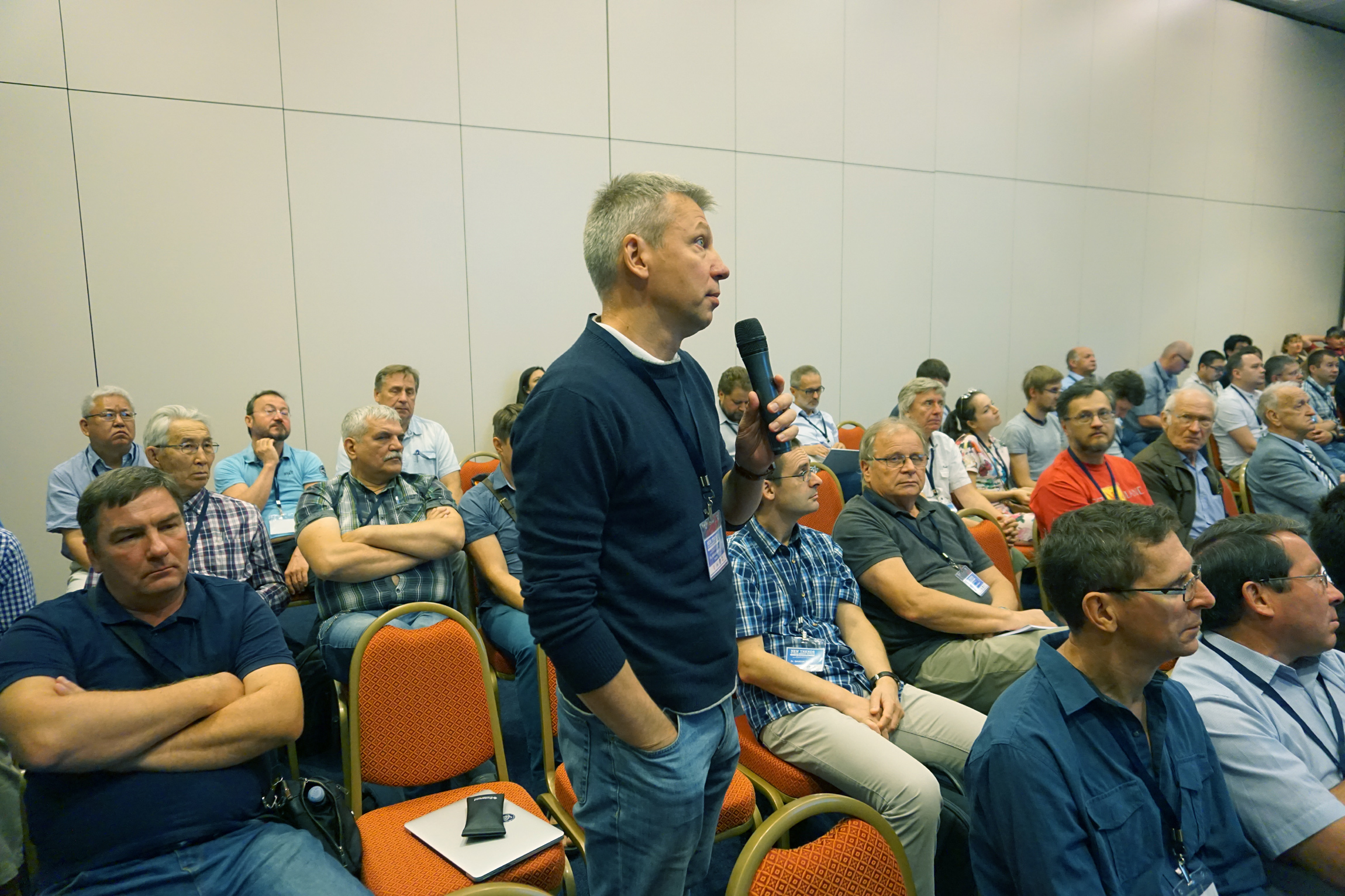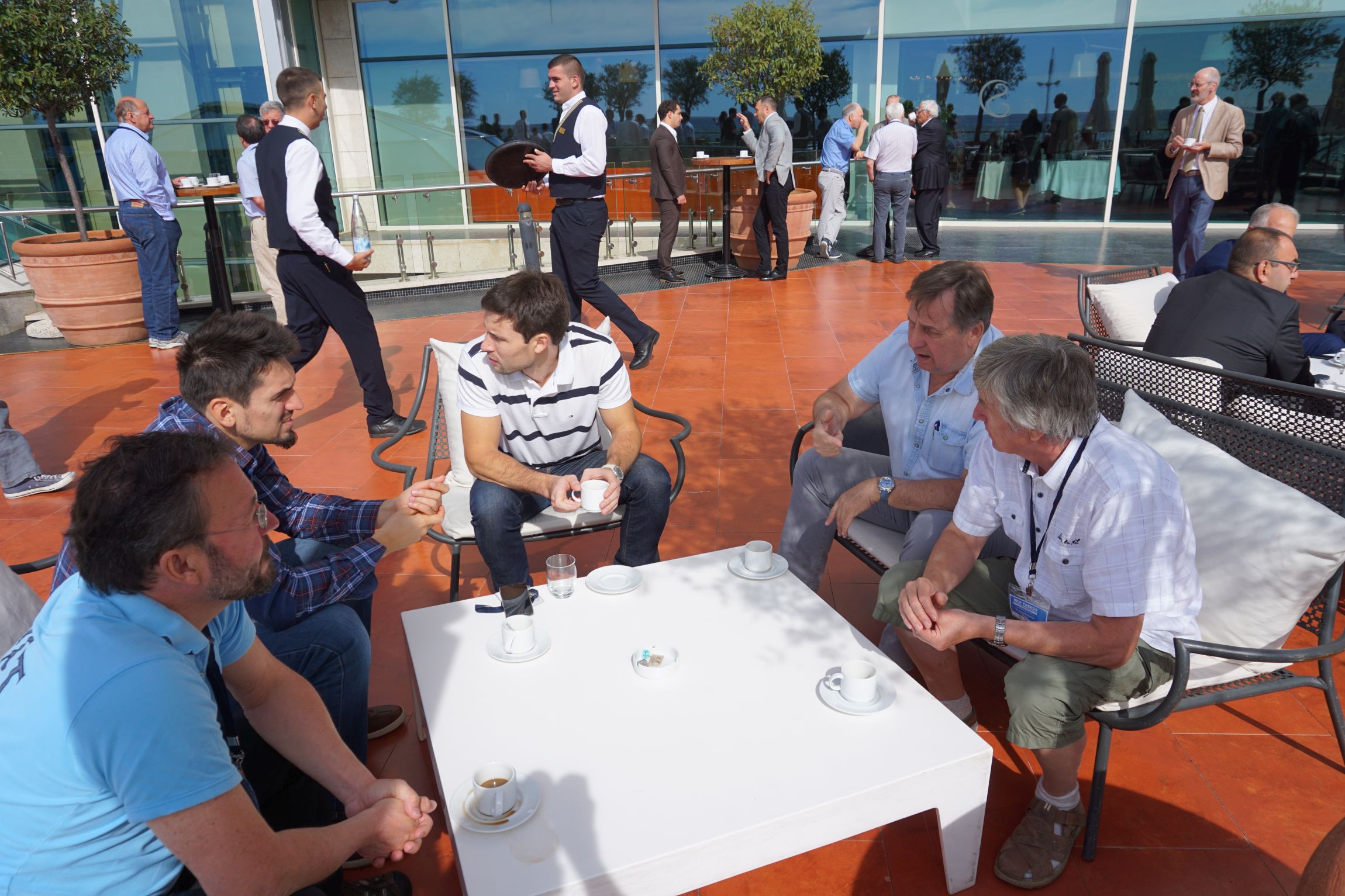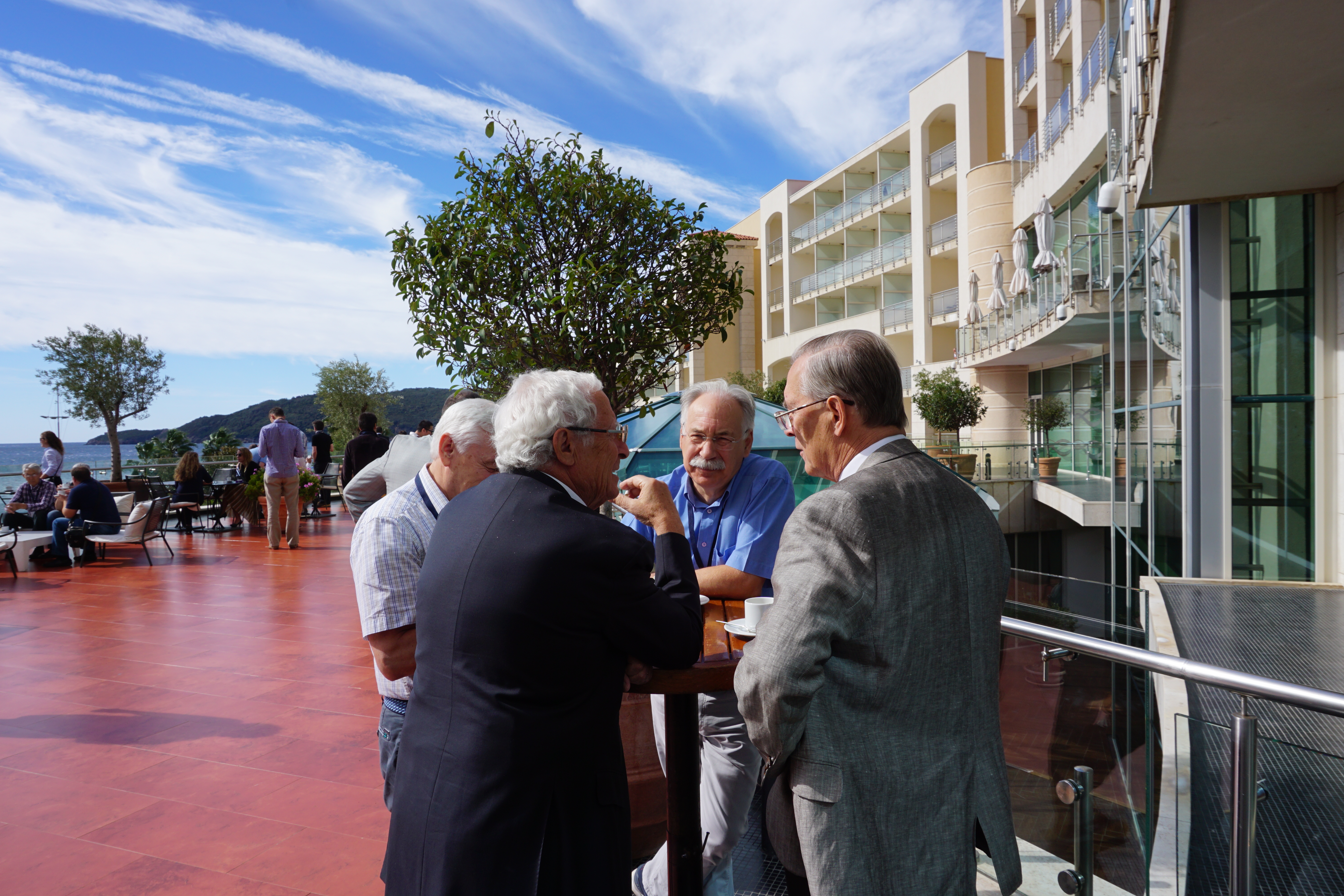D.I. Kazakov about the conference in Budva
Interview, 21 November 2018
From 24 to 30 September 2018, the 2nd International Conference “New Trends in High-Energy Physics” organized by JINR and the “Jadran” company was held on the coast of the Adriatic sea. About 70 leading scientists and representatives of international collaborations on particle physics from leading scientific laboratories of the world participated in the event. A wide range of physical issues was discussed during five days: from research at colliders to neutrino physics.
A journalist of the JINR Weekly Newspaper asked Director of the Bogoliubov Laboratory of Theoretical Physics, RAS Corresponding Member Dmitry Kazakov to comment on the scientific programme of the conference in terms of trends, in particular, as far as they include new ideas and models.
– Now, we experience the moment when hopes to discover new physics are connected with the Large Hadron Collider. Of course, there are also non-accelerating experiments and many other issues, but still, development of particle physics is based on experiments at accelerators. Everyone thought it would be launched, it would enter the operation mode, and various discoveries would be made. It does not work like this. However, the situation is rethought, we think over the world we live in. We hear, at this conference as well, reports on construction projects of even larger accelerators. In general, such reports are made at all such conferences. Both linear and circular accelerators are discussed, but it is not obvious for which physics they should be constructed. It has become a general concern, everyone understands that such expansive complexes not only demand a lot of money, but enormous human resources as well in order to develop the technology, create new detectors, and so on. These are extremely complex facilities. They are at the top of modern technological development. Of course, such considerable efforts are necessary to solve a particular challenging task. If there is a task, there will be a motivation, it will be possible to explain why this money is needed, and make large teams of highly qualified people work hard. There are no such tasks because no new physics has been found at LHC yet.
– What about the Higgs boson?
– Well, the Higgs boson is now taken as a background, if you like. We have already passed all this, and now we are discussing deviations and so on… However, of course, the study of the Higgs boson remains at the top of the agenda. New discoveries are awaited from it.
In non-accelerating experiments the situation is somehow similar to this one. Let’s consider the dark matter: there are no signs in all experiments – relevant or indirect. Neutrino physics also generally comes down to precising various parameters and borders, although this field may be the most successful: all parameters have been successfully measured, but the key questions have not been answered: we do not know the absolute mass, the nature of neutrino, we do not know whether additional neutrino exists or not. There are of course various theoretical opinions, but no key answer is given, and, most importantly, it is not even awaited. All this develops… Although the scale is not so “accelerating”, they are smaller, and the time to obtain the answers is shorter. But still, it works.
We are now at the crossroads, and it is reflected in all reports. People inform us that everything works excellent, everything agrees with the Standard Model, and there is nothing new. However, I think that in such a disappointing situation, if you like, a particular stage comes when CERN has accumulated a lot of new information equal to about 150 inverse femtobarns during the second run. Only 39 of them have been processed. Now, the accelerator will be stopped for two years, our colleagues from CERN will upgrade all systems and analyze the data. It seems like new physics we are searching for and thinking about does exist and will be manifested.
Let’s recall the story of the discovery of the Higgs boson. In 2011, a little blister emerged, and nobody paid attention to it because there were many similar ones. All these blisters usually wane. Chinese students obtained dozens of such events, but nobody paid much attention at first. Then, this mass started to grow. They say that the skill of the experimenter is to notice at the right time that something appears somewhere. To pay attention, to start the analysis, and etc. And gradually from this imperceptible thing, which was not even a “5” or at least “3 sigma” observation, CERN found an interesting solution: they decided not to achieve a “5 sigma” discovery in the same mode of the experiment and to immediately summarize all the modes and data from two detectors. You should agree that this is a non-standard approach, but it led to success. Gradually they achieved five sigmas in total. Now, there are five, seven, and eight sigma for each experiment. However, they began with collecting just small pieces of information.
I believe that now such a moment has come when these 150 inverse femtobarns will be processed, and if there are some events, they should not be in one place, as the discovery of one thing, of a particular effect. They are likely to be connected. If we say that there is a new particle, a new interaction, something new we are searching for, all this cannot appear in one place and then have no manifestations somewhere else. It is an unlikely case. There is a good chance that new physics exists, though being veiled. If precision and statistics increase, it will gradually start to come out. Maybe at first, it will be in the form of a background, to which no one will pay attention, then, suddenly, somewhere something will start to emerge. I cannot predict what will happen, maybe it won’t, but if it does, it will be in that way. That is why the upcoming stage of processing an enormous amount of information will allow us to say before the next run of the accelerator: look, this is what happens – there’s something a little bit wrong, and this is wrong and there’s something wrong too. Maybe all this will give us some indication of new physics.
This boring period, when the accelerator is stopped, may be far from being boring. Now, processing of a large amount of information will start. Unlike the old times, when the discovery was recorded on some kind of a cassette, film or something else, now it is made in another way. Now, Monte Carlo programmes are developed, everything is compared, superimposed, processed within the framework of this or that model… All this is done for small pieces of something, about which Mayakovskiy said: “For the sake of a single word you waste a thousand tons of verbal ore.” This is how it works. This moment is coming.
We are now at this conference listen to everyone saying that nothing happens. It is a bit boring. Nevertheless, I think that now the times have come when something can be found out only in such a way. I expect the upcoming years with interest as far as the accelerator will not operate and the data will be processed and reported on. If something is acquired, it will happen little by little and in different places.
The second aspect concerns non-accelerating experiments. Reports were made on neutrino and the dark matter. Each field supposes research for several years, and again, I did not hear anything new, because I heard about the same thing at another conference, looked through the materials of the Rochester conference this year: there is nothing new in this field, but everybody reports on their efforts, and in the end, all these efforts will lead to something.
We try to understand in which directions different fields develop. It is always interesting to share opinions, which have not been expressed at the conference, in informal conversation: what colleagues feel clearly or unclearly, it always creates some kind of an atmosphere… If we consider this conference, working and leisure conditions are perfect here. It is great that there are many young scientists; it is a pleasure to look at them and listen to their reports. It is observed not only here: for the past few years, our youth have become more mature. They have not got stiffness, their presentations and language were at a proper level. So, it was an interesting conference.
Evgeny Molchanov,
Budva-Dubna, photo by the author
To be continued
